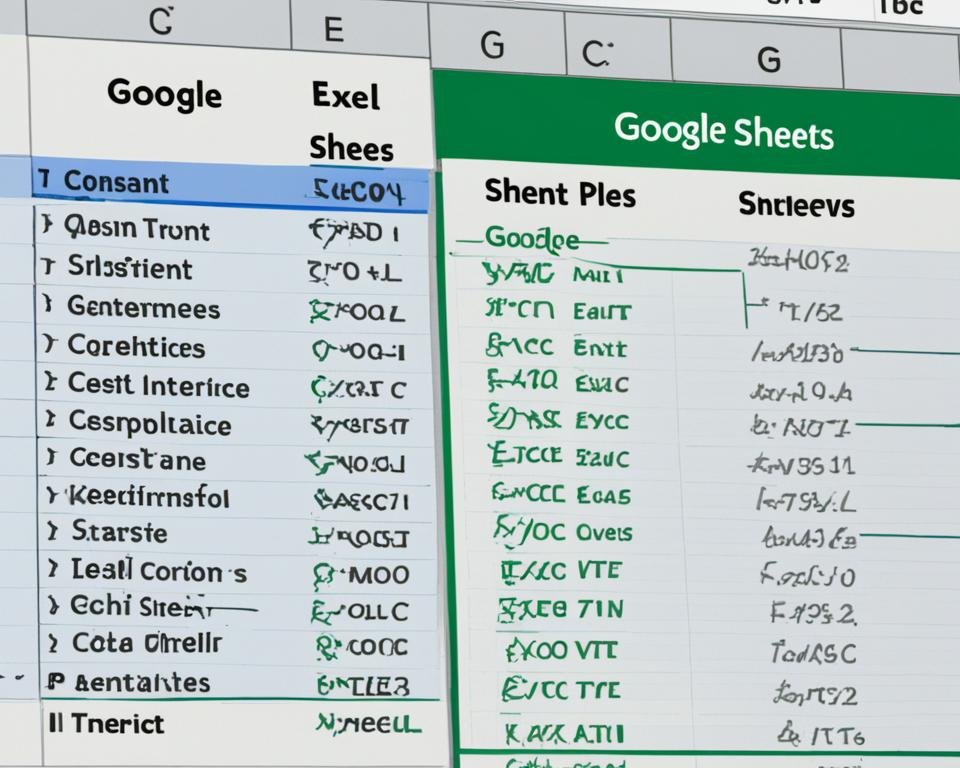Excel vs Google Sheets: Are Formulas Identical?

Understanding the Basics of Excel and Google Sheets Formulas

Excel and Google Sheets are powerful tools for data manipulation and analysis, yet they present their functionalities in different ways, particularly when it comes to formulas. Here, we’ll examine the similarities and differences between the formulas in these platforms.
Formula Syntax

The basic syntax for writing formulas in both Excel and Google Sheets is similar. Here is a comparison:
- Function Name: Both use function names in English, like SUM, AVERAGE, MAX, etc.
- Arguments: Functions take arguments within parentheses, separated by commas.
- Cell References: Use of cell references is identical with letters for columns and numbers for rows (e.g., A1, B2).
Differences in Function Availability

While the core functionality of formulas remains the same, there are some notable differences:
Exclusive Functions

Here are some functions available in one platform but not in the other:
- Excel: Power Query Functions, IFS, SWITCH, LET
- Google Sheets: SPARKLINE, GROWTH, NETWORKDAYS.INTL, IMAGE
Excel’s IFS function allows for multiple logical tests without nested IF statements, while Google Sheets has a IFS equivalent but uses IF for single conditions.
Application-Specific Functions

Due to their different environments, Excel and Google Sheets have functions tailored to their ecosystems:
- Excel: Financial analysis functions like XIRR, XNPV, which are more advanced than Google Sheets’ equivalents.
- Google Sheets: Collaboration-specific functions like IMPORTDATA, IMPORTXML for real-time data import.
Formula Behaviour and Performance

The way formulas execute can differ in performance and behavior:
Recalculation

Excel:
- Calculates when a workbook is opened or when a cell changes.
- Can perform manual or automatic calculation based on settings.
Google Sheets:
- Updates formulas in real-time with changes from any user.
- Calculations can be slower due to cloud processing but offer real-time updates.
Array Formulas

Both support array formulas, but the handling and syntax can differ:
- Excel requires the use of Ctrl + Shift + Enter to create array formulas, which are indicated by curly braces in the formula bar.
- Google Sheets automatically detects and handles array formulas without special entry, using an ARRAYFORMULA function if needed.
Handling Volatile Functions

Excel:
- Functions like NOW(), RAND(), and TODAY() are volatile and recalculate frequently, affecting performance.
Google Sheets:
- Similar volatile functions like NOW(), TODAY() can also impact performance but behave differently due to cloud computation.
Collaborative Features

The collaborative nature of Google Sheets provides unique formula capabilities:
- Real-Time Editing: Multiple users can edit formulas simultaneously, which can lead to conflicts.
- Sharing and Version History: Formulas in Google Sheets can be shared, and previous versions can be accessed.
Formula Compatibility

Here is a simple table to illustrate the compatibility between some common formulas:
| Formula | Excel | Google Sheets |
|---|---|---|
| SUM | Yes | Yes |
| AVERAGE | Yes | Yes |
| VLOOKUP | Yes | Yes |
| IF | Yes | Yes |
| SPARKLINE | No | Yes |
| IFS | Yes | Yes (as IF(logical1,value_if_true1,IF(…))) |
| IMAGE | No | Yes |

Security and Data Integrity

Google Sheets being cloud-based can introduce unique considerations:
- Data Encryption: Google uses encryption to protect data in transit and at rest, influencing formula performance.
- Access Control: Formulas can be protected or hidden, offering different levels of security than Excel.
⚠️ Note: Be cautious when sharing Google Sheets; formulas and their associated values can be accessed by any user with editing rights.
Summary

While Excel and Google Sheets offer a rich set of functions for similar purposes, there are nuances in their formula handling, performance, and collaboration features. Excel tends to have more advanced financial and data analysis functions, whereas Google Sheets excels in real-time collaboration and web-based functionalities. Users should consider the specific needs of their projects when choosing between these platforms.
Can I use Excel formulas in Google Sheets?

+
Most basic functions are compatible, but some advanced or specialized functions in Excel might not have equivalents or work differently in Google Sheets.
Which platform is better for financial analysis?

+
Excel might be preferred for in-depth financial analysis due to its specialized functions, larger dataset handling, and built-in Power Query capabilities.
Does Google Sheets support external data import?

+
Yes, Google Sheets supports several functions like IMPORTDATA, IMPORTXML, and QUERY to import and manipulate external data directly within the document.



